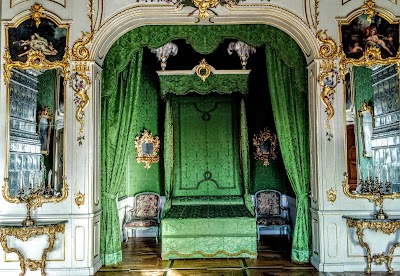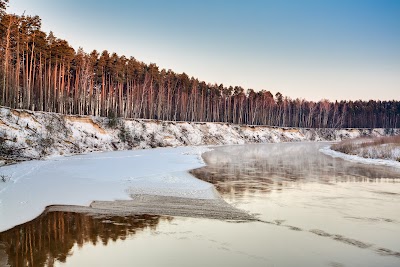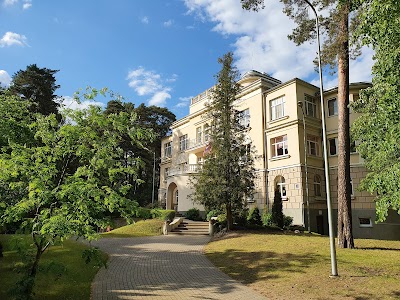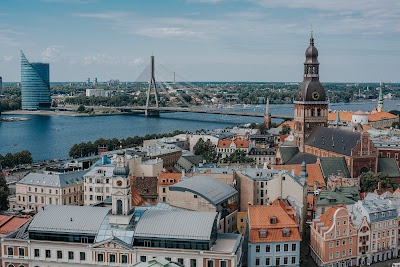Rundāle Palace (Rundāles pils)
Overview
Rundāle Palace: A Baroque Jewel of Latvia
Nestled in the picturesque Sala Municipality of Latvia, Rundāle Palace is a stunning Baroque masterpiece that invites visitors on an enchanting journey through history, artistry, and grandeur. Constructed in the 18th century for Duke Ernst Johann von Biron of Courland, this architectural gem is often likened to France's Versailles and Russia's Peterhof, thanks to its remarkable elegance and opulence.
The story of Rundāle Palace begins in 1736, when its foundations were laid under the design of the illustrious Russian court architect Bartolomeo Rastrelli, renowned for his work on St. Petersburg's Winter Palace. The construction of Rundāle took several decades, interrupted by political upheaval, and was ultimately completed in 1768. The palace quickly became the vibrant heart of ducal life, reflecting the wealth and grandeur of the Duchy of Courland.
Within its walls, Rundāle boasts 138 meticulously decorated rooms, each restored to showcase its original splendor. Guests can wander through the opulent Golden Hall, the elegant Marble Hall, and the Grand Gallery, where lavish receptions and royal events once took place. Each space is adorned with exquisite stucco work, gilded accents, vibrant frescoes, and period furniture, weaving a rich tapestry of historical narratives.
A highlight of any visit is the breathtaking French-style park that surrounds the palace. Spanning 10 hectares, this garden, laid out in 1735, features sophisticated geometric patterns and manicured landscapes typical of Baroque design. Visitors can meander along central avenues, admire flower parterres, and take in ornamental fountains, all while enjoying the serene beauty of the rose garden, which boasts nearly 2,400 varieties of roses. This tranquil oasis provides an ideal backdrop for leisurely strolls and memorable photographs.
Rundāle Palace also offers a unique glimpse into Latvian and European history. During the Napoleonic Wars, it served as an infirmary, and throughout the 20th century, it was home to a school and a granary. Though it suffered extensive damage in the aftermath of World War II, dedicated restoration efforts have breathed new life into the palace, ensuring its preservation for future generations.
Art enthusiasts will be captivated by the extensive collection housed within the palace, featuring paintings, porcelain, and decorative arts from the 17th to the 19th centuries. Curated exhibits reveal the sophisticated tastes of the Duke and the artistic movements of the era. Noteworthy items include portraits of the ruling family and European nobility, intricate Meissen porcelain pieces, and stunning murals that grace many of the rooms.
Throughout the year, Rundāle Palace hosts a variety of events, from classical music concerts to historical reenactments and seasonal festivals. These events not only attract international visitors and locals alike but also breathe life into the palace’s rich history and culture, offering a dynamic way to engage with this historic site.
For those eager to delve deeper into historical architecture, guided tours at Rundāle are invaluable. Knowledgeable guides share insights about the palace's architectural features, its storied past, and the lives of its former residents. For a more independent exploration, audio guides are available in multiple languages, catering to the diverse tourist demographic.
Rundāle Palace is more than just a historic site; it stands as a testament to the resilience and dedication of those committed to preserving its beauty. The layers of history woven into its walls, the artistic treasures within, and the natural splendor of its gardens make it a must-visit destination for anyone traveling through Latvia. Whether you’re an art lover, a history enthusiast, or simply seeking to immerse yourself in the grandeur of a bygone era, Rundāle Palace promises an extraordinary experience that lingers long after your visit.
In conclusion, Rundāle Palace exemplifies magnificent Baroque architecture and serves as an important cultural symbol for Latvia. Its historical significance, coupled with artistic treasures and beautifully maintained gardens, makes it an essential stop for any traveler. A journey to Rundāle not only unveils the grandeur of the past but also offers a peaceful retreat in one of the most beautiful settings in the Baltics.






